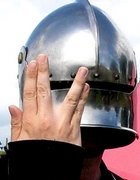
Getty Images
Tariffs reshape UC hardware costs and supply strategies
Tariffs are driving up UC hardware costs, forcing vendors into supply chain shifts and price hikes. In response, many IT buyers are turning to cloud-based communications software.
Unified communications hardware manufacturers continue to grapple with costly surcharges on Chinese-sourced materials. These increases have forced UC hardware vendors to make difficult decisions, notably passing higher costs on to consumers, planning for fickleness within the supply chain and even resorting to hoarding inventory, according to executives at Jabra and HP/Poly.
Since June 2025, tariffs on steel and steel-derived raw materials have doubled from 25% to 50%, according to a White House press release. Aluminum and its byproducts were similarly affected by tariff hikes, but industry recoil -- particularly from tech firms -- led the Trump administration to carve out exemptions.
Among those exceptions are items typically used to manufacture UC hardware, such as semiconductors, integrated circuits and flat-panel displays. However, they are still subject to an earlier 20% base tariff on Chinese imports, making it, in many cases, more expensive for UC manufacturers to do business.
Irwin Lazar, president and principal analyst at research firm Metrigy, said he recently attended AV conference InfoComm, where the topic of tariffs came up repeatedly in conversations with video conferencing vendors.
"They are all taking defensive action ranging from moving manufacturing from China to stockpiling inventory in the United States," he said.
Tariffs influence UC buying strategies
With the Trump-era tariffs driving up hardware costs, end-user organizations are rethinking their UC strategies, in many cases adjusting budgets and reassessing future hardware needs. For some, rising prices are a critical juncture, said David Smith, founder and principal at research and advisory firm InFlow Analysis.
This is a tipping point that is steering end-user organizations away from traditional infrastructure and toward cloud-based, UC-as-a-service (UCaaS) offerings, he said. This shift likely spells profitable news for UC software providers, as more organizations migrate to the cloud in droves to avoid the capital burden of costly hardware.
"The whole issue with tariffs is the uncertainty it breeds, especially around supply chain disruptions," he said.
Smith said many IT buyers he's spoken with have explicitly mentioned the increased cost of hardware due to tariffs has forced them to either scale back planned hardware refreshes, extend the lifecycle of existing equipment or reallocate budget from other IT initiatives to cover higher prices.
That, Smith contended, isn't just about rethinking strategies, but often about direct, painful budget adjustments. "The move to UCaaS and cloud has already been upon us, but tariff uncertainty does add another accelerant from end-user organizations I speak with," he added.
Communication lessens tariff blows
Ian Scott, regional president of North America at Jabra, said the manufacturer had to pass on costs, which created what he called "significant operational challenges for Jabra partners and distributors." But, today, business is mostly back to normal.
Scott said Jabra has continued to communicate with stakeholders, informing them of the effects of these tariffs and taking steps to minimize future risk across its supply chain. Jabra has remained nimble despite all signs pointing to a hostile business climate, he said.
Jabra also delayed making final purchasing decisions to evaluate market changes. Scott noted that customer and partner reactions, so far, remain positive. Early transparency went a long way in the face of uncertainty, even though preparing for uncertainty is never a simple feat, he said.
"Our strategy has always been to optimize and diversify our supply chains," Scott said.
Redesigning logistics networks creates flexibility
HP/Poly acted swiftly when tariffs were first enacted. The hardware provider took steps, including rebalancing manufacturing, redesigning its logistics network, shifting sourcing and qualifying new product configurations, said Enrique Lores, president and CEO at HP/Poly.
"These efforts both strengthened our operational flexibility and laid the foundation for continued stability," he said.
While HP/Poly implemented some price increases to offset cost pressure, the decision was not made lightly, Lores said. He asserted that the firm wishes to carry that acceleration into the third and fourth quarters to reinforce its supply chain and operational capacities.
Vendors must remain flexible to thrive in the world of UC manufacturing during the uncertainty over tariffs. Hardware manufacturers need to continue to make difficult decisions to counterbalance the weight of the Trump administration's tariffs and keep products on the shelves for hungry UC consumers.
Moshe Beauford is a writer with nearly a decade of experience covering enterprise technology, including AI, unified communications and customer experience.








